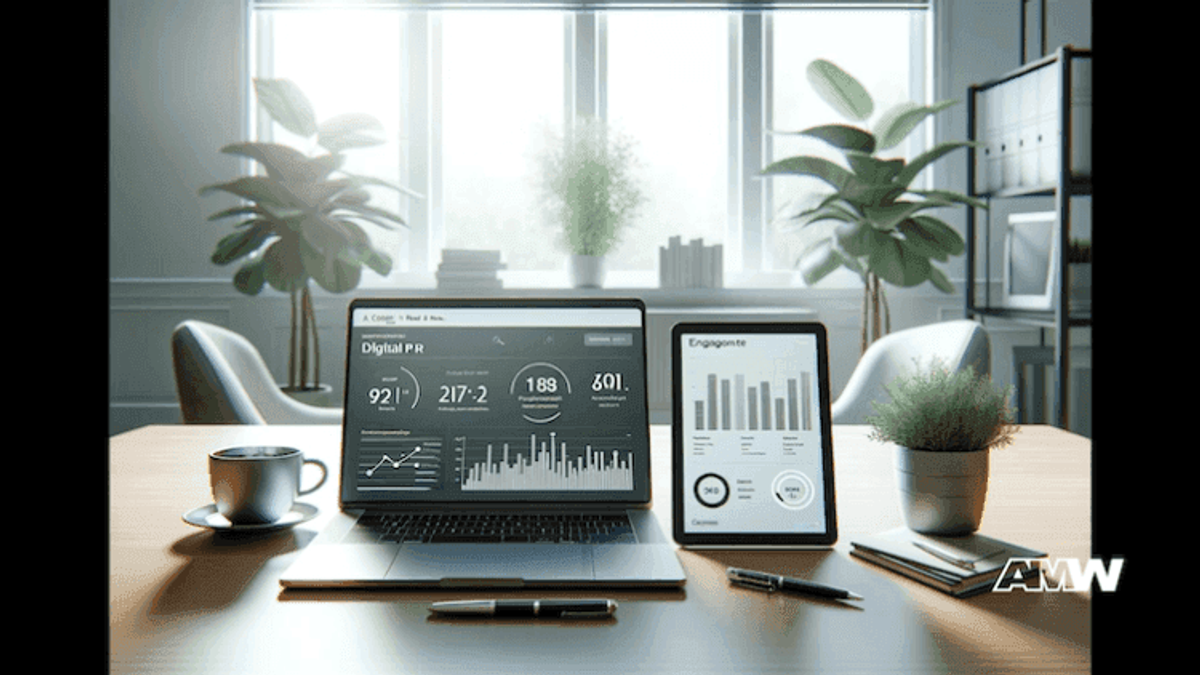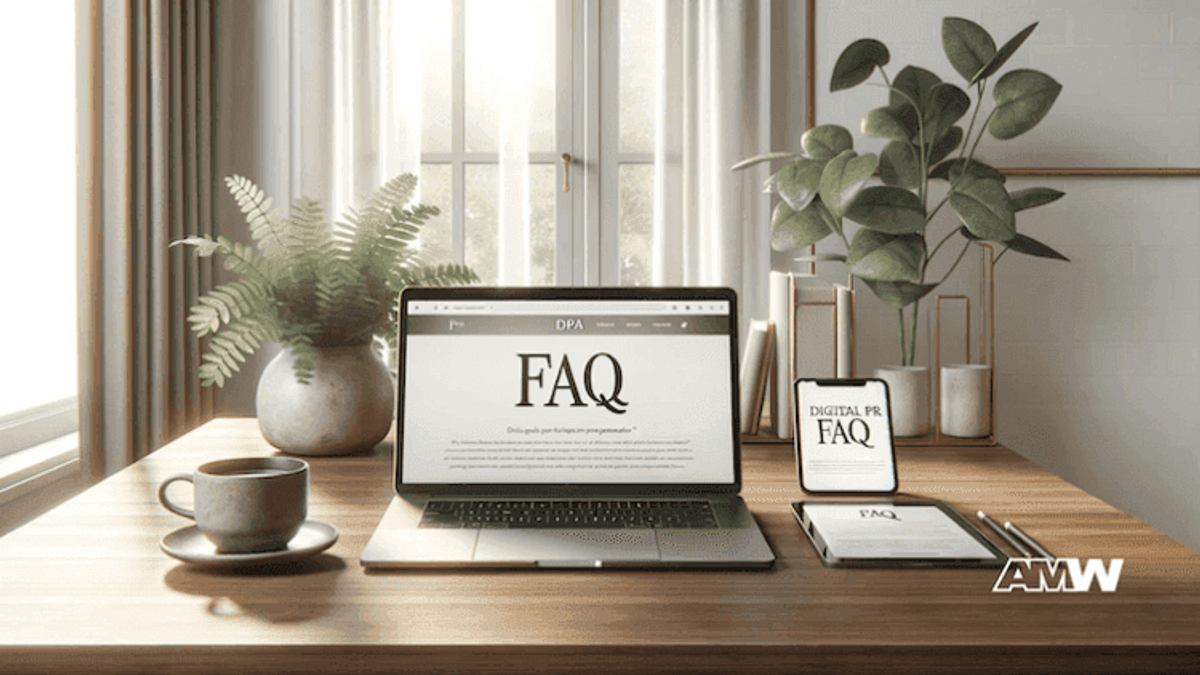Digital PR: Key Strategies for Boosting Your Brand's Online Presence

In today's highly connected world, the internet has become a pivotal space for businesses to establish and grow their presence. Digital Public Relations (PR) plays a crucial role in this landscape, offering innovative ways to engage with audiences, enhance brand visibility, and build a positive reputation. Unlike traditional PR, which focuses on offline channels such as print media and events, Digital PR leverages online platforms to create impactful and measurable outcomes.
Quick Summary
In the evolving world of marketing, Digital Public Relations is essential for enhancing brand visibility and reputation. Unlike traditional PR, it focuses on online interactions through content marketing, influencer partnerships, and SEO. Key benefits include increased visibility, direct audience engagement, and improved credibility. To succeed, brands should establish clear objectives, identify target audiences, collaborate with relevant influencers, create shareable content, and leverage socia
Understanding Digital PR

Digital PR is an approach to public relations that uses digital tools and channels to manage and enhance a brand's online presence. This includes content marketing, influencer partnerships, social media engagement, and search engine optimization (SEO). Digital PR aims to increase brand visibility, drive traffic to the company's website, and improve its search engine rankings.
Differences Between Traditional PR and Digital PR

Traditional PR focuses on securing coverage in newspapers, magazines, TV, and radio. Digital PR, on the other hand, prioritizes online coverage, including placements on high-authority websites, blogs, and social media platforms. Traditional PR typically involves one-way communication, whereas Digital PR emphasizes two-way interaction, allowing brands to engage directly with their audiences.
Ready to Grow Your Business?
Get a free consultation and custom strategy tailored to your goals.
Benefits of Digital PR for Businesses
Digital PR offers numerous benefits that can significantly impact a brand's success:
- Increased Visibility:Businesses can reach a broader audience by getting placements on popular websites and social media platforms.
- Enhanced Credibility:Being featured on reputable online platforms can enhance a brand's credibility and trustworthiness.
- Improved SEO:Quality backlinks from authoritative websites boost rankings, making it easier for customers to find the brand online.
- Direct Engagement:Digital PR enables real-time audience interaction, fostering stronger relationships and customer loyalty.
Developing a Comprehensive Digital PR Strategy

A well-defined Digital PR strategy is essential for achieving the desired outcomes. Here are the steps to develop a plan:
Setting Clear Objectives
The first step in making a Digital PR strategy is to establish clear, measurable objectives that align with your business goals and provide a roadmap for your PR efforts. Common objectives include:
- Increasing Brand Awareness:Make more people aware of your brand and its offerings.
- Building Online Reputation:Establishing a positive image and credibility in the digital space.
- Driving Website Traffic:Increasing website traffic by utilizing different online channels to attract more visitors.
Identifying Target Audience
To understand your audience is crucial for tailoring your Digital PR efforts to meet their needs and preferences. This involves researching demographic information, online behaviors, and preferences. By knowing your audience, you can make more engaging content that resonates.
Conducting a Competitive Analysis
Analyzing your competitors' Digital PR strategies can provide valuable insights into what works and what doesn't. Find their strengths and weaknesses, the types of content they produce, the platforms, and their engagement levels. This information can help refine your strategy and find opportunities to differentiate your brand.
Building Strong Relationships with Online Influencers
Influencers are a powerful force in digital marketing. Collaborating with the right ones can amplify your message and reach a wider audience.
Importance of Influencer Partnerships
Influencers have built credibility with their followers, enabling them to promote your brand effectively. Their endorsement can increase awareness, engagement, and sales for your products or services.
Identifying and Approaching Relevant Influencers
The key to successful influencer partnerships is finding influencers who resonate with your audience and share similar values. Use tools like social media analytics to find influencers with high engagement rates. When approaching influencers, personalize your pitches and highlight the mutual benefits of the partnership.
Crafting Compelling Pitches
A compelling pitch is crucial for securing influencer collaborations. Communicate your brand's value proposition, outline the proposed partnership, and specify what you offer in return. Be concise, professional, and transparent to build trust and interest.
Creating High-Quality, Shareable Content
Content is at the heart of any Digital PR strategy. Creating high-quality, shareable content can significantly enhance your brand's online presence.
Types of Content That Engage Audiences

Different types of content can engage your viewers in various ways. Here are some effective content formats:
- Blog Posts:Informative and insightful articles that address your audience's interests and pain points.
- Infographics:Visually appealing graphics that present complex information in an easy-to-digest format.
- Videos:Engaging videos that can capture attention and convey your message effectively.
- Podcasts:Audio content that allows for in-depth discussions and reaches audiences on the go.
Content Creation Best Practices
To create high-quality content, focus on the following best practices:
- Understand Your Audience:Create your content to meet the needs of your target audience.
- Be Original:Provide unique insights and perspectives to differentiate your content.
- Maintain Quality:Ensure your content is well-researched, well-written, and visually appealing.
- Optimize for SEO:Use relevant keywords, meta descriptions, and alt text to improve visibility.
Ready to Grow Your Business?
Get a free consultation and custom strategy tailored to your goals.
Leveraging User-Generated Content
UGC can be a strong addition to your Digital PR strategy. Motivate your viewers to create and share content related to your brand, including reviews, testimonials, photos, and videos. UGC builds trust and provides authentic content that resonates with potential customers.
Utilizing Social Media Effectively
Social media are vital channels for Digital PR. They offer opportunities for real-time engagement and content distribution.
Choosing the Right Social Media Platforms
Not all social media are made equal. Select social media that aligns with your brand and audience. For instance:
- LinkedIn:Ideal for B2B marketing and professional networking.
- Instagram:Great for visually-driven content and engaging with younger audiences.
- Twitter:Effective for real-time updates and customer service.
Crafting a Consistent Brand Voice
Consistency is important for establishing a recognizable brand. Cultivate a brand voice that mirrors your brand's personality and values. Utilize this voice consistently across all social media platforms to craft a unified and genuine brand image.
Engaging with Followers and Responding to Feedback
Social media is a two-way communication channel. Engage by responding to comments and mentions. Whether positive or negative, addressing feedback demonstrates that you value your customers.
Leveraging SEO for Enhanced Visibility
SEO is a critical component of Digital PR. It ensures that your content is easily found by search, driving traffic to your website.
Importance of SEO in Digital PR
SEO enhances your online visibility, making it easier for potential customers to find you. A strong SEO strategy improves your search engine rankings, increasing website traffic and brand exposure.
On-Page and Off-Page SEO Techniques
Effective SEO involves both on-page and off-page techniques:
- On-Page SEO:Optimizes individual web pages, including keyword usage, meta tags, headings, and content quality.
- Off-page SEO involvesactivities outside your website, such as building backlinks from reputable sites, social media marketing, and influencer outreach.
Using Keywords Strategically
Keywords are the foundation of SEO. Conduct research to identify relevant terms and phrases your target audience is searching for. Integrate this into your content, titles, and meta descriptions to improve search engine rankings.
Building Backlinks Through Digital PR Efforts
Backlinks from high-authority websites are crucial for SEO. Digital PR can help you earn these backlinks by securing media coverage, guest blogging opportunities, and influencer collaborations. Focus on making content that others will want to link to.
Measuring and Analyzing Digital PR Performance

Measuring your Digital PR efforts is important for understanding their impact and refining your strategies.
Key Performance Indicators (KPIs) to Track
Identify KPIs that align with your Digital PR objectives. Common KPIs include:
- Website Traffic:Keep track of the number of guests who visit your website and their behavior.
- Social Media Engagement:Track likes, shares, comments, and followers.
- Backlinks:Measure the quality of backlinks to your website.
- Media Mentions:Count the times your brand is mentioned in online publications.
Tools for Monitoring Digital PR Efforts
Different programs can help you track and analyze your Digital PR performance:
Ready to Grow Your Business?
Get a free consultation and custom strategy tailored to your goals.
- Google Analytics:Gives insights into website traffic and user behavior.
- Social Media Analytics:Platforms like Facebook Insights and Twitter Analytics offer detailed data on social media performance.
- SEO Tools:Moz and Ahrefs track backlinks, keyword rankings, and overall SEO health.
Analyzing Data to Refine Strategies
Analyze your Digital PR data regularly to identify trends and areas for improvement. Use this information to refine your strategies, optimize your content, and enhance your online presence.
Digital PR is an essential component of modern marketing strategies. Key strategies include:
- Developing a comprehensive Digital PR strategy.
- Building relationships with online influencers.
- Creating high-quality content.
- Utilizing social media effectively.
- Leveraging SEO.
- Measuring performance.
Learning from successful Digital PR campaigns can also provide valuable insights and inspiration.
Digital PR enhances visibility and credibility and allows for direct audience engagement, fostering stronger relationships and driving business growth.
FAQ

How do I identify the right influencers for my brand?
Look for influencers whose audience matches your demographic, share similar values, and have high engagement rates.
What types of content are most effective in Digital PR?
Effective content includes blog posts, infographics, videos, and podcasts, especially when they are high-quality and shareable.
Why is SEO important for Digital PR?
SEO improves your brand's visibility in search, driving more traffic and enhancing your online presence.
How can I measure the success of my Digital PR efforts?
Track KPIs such as website traffic, social media engagement, backlink quality, and media mentions using programs like Google Analytics and social media analytics.
Can small businesses benefit from Digital PR?
Yes, Digital PR is scalable and can be tailored to match the budget of small businesses, helping them increase visibility and compete with larger brands.
Ready to Grow Your Business?
Get a free consultation and custom strategy tailored to your goals.
Frequently Asked Questions
What is the difference between traditional PR and digital PR?
Traditional PR focuses on securing coverage in offline channels like newspapers, magazines, TV, and radio, typically involving one-way communication. Digital PR leverages online platforms including websites, blogs, and social media to enhance brand presence. Digital PR emphasizes two-way interaction, allowing direct audience engagement, measurable outcomes, and improved SEO through quality backlinks. While traditional PR targets broader demographics, digital PR enables precise audience targeting and real-time performance tracking.
How does digital PR improve SEO and search engine rankings?
Digital PR improves SEO by generating high-quality backlinks from authoritative websites and online publications. When reputable sites link to your content, search engines view this as a trust signal, boosting your domain authority and search rankings. Digital PR also increases brand mentions, social signals, and content visibility across multiple platforms. Combined with strategic keyword integration and content optimization, these factors help search engines better understand and rank your website for relevant queries.
What are the most effective types of content for digital PR campaigns?
The most effective digital PR content includes informative blog posts that address audience pain points, visually appealing infographics that simplify complex data, engaging videos for social media sharing, and podcasts for in-depth discussions. User-generated content like customer reviews and testimonials builds authenticity and trust. Each content type should be original, well-researched, SEO-optimized with relevant keywords, and tailored to your target audience's preferences and the specific platform where it will be distributed.
How do you identify and approach the right influencers for digital PR?
Identify relevant influencers by using social media analytics tools to find those with high engagement rates in your industry who share similar values with your brand. Look for influencers whose audience demographics match your target market. When approaching them, personalize your pitch by mentioning their recent content, clearly communicate your brand's value proposition, outline specific partnership benefits, and specify what you offer in return. Be professional, concise, and transparent to build trust and interest.
What social media platforms work best for digital PR strategies?
The best social media platforms depend on your target audience and business type. LinkedIn excels for B2B marketing and professional networking, making it ideal for thought leadership content. Instagram works well for visually-driven brands targeting younger demographics through photos and stories. Twitter is effective for real-time updates, customer service, and news sharing. Facebook offers broad reach for community building, while TikTok and YouTube are powerful for video content and reaching Gen Z audiences.
How do you measure the success of a digital PR campaign?
Measure digital PR success through key metrics including website traffic increases, search engine ranking improvements, backlink quality and quantity, social media engagement rates, and brand mention sentiment analysis. Track conversions and lead generation directly attributed to PR efforts. Monitor domain authority improvements, share of voice compared to competitors, and media coverage reach. Use tools like Google Analytics, social media insights, and PR monitoring platforms to gather data and calculate ROI based on your initial campaign objectives.
What are the key components of a successful digital PR strategy?
A successful digital PR strategy requires clear, measurable objectives aligned with business goals, thorough target audience research, and competitive analysis. Essential components include building relationships with relevant online influencers, creating high-quality shareable content, maintaining consistent brand voice across platforms, and implementing both on-page and off-page SEO techniques. Regular engagement with followers, strategic keyword usage, leveraging user-generated content, and choosing appropriate social media platforms are also crucial for maximizing online visibility and brand reputation.
Related Articles

What is Digital PR? A Guide to Finding the Best Digital PR Agency
Understanding digital PR can be important for startups and established brands seeking to revitalize their online presence. Remember, while this post offers some ideas, it’s essential to conduct you

PR SEO: The Ultimate Guide to Digital Marketing Success
Integrating PR and SEO has become a crucial strategy for achieving online success in digital marketing. PR SEO combines the strengths of public relations and search engine optimization, creating a

6 Ways Digital PR Contributes to Your Business Success
In today's digital landscape, businesses cannot afford to ignore the power of digital PR. The internet has become a vital part of our lives, and as a result, businesses must adapt and incorporate digi